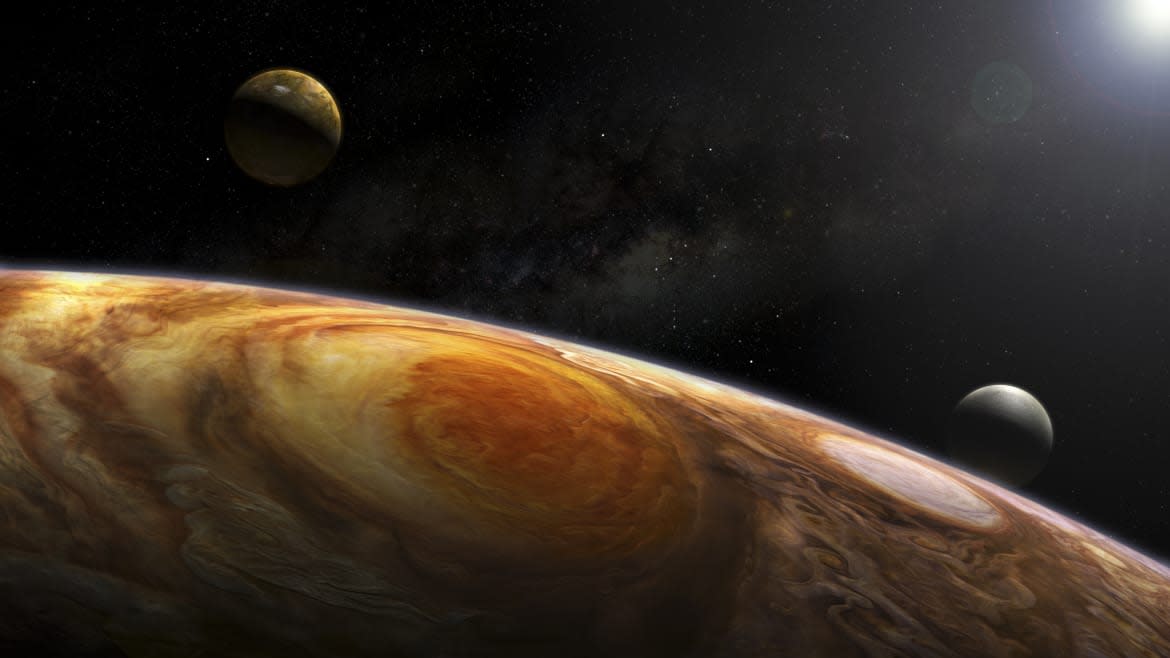New NASA Pic of Jupiter’s Icy Moon Europa Is the Most Detailed One Yet

NASA’s Jupiter-orbiting space probe Juno just snapped the most high resolution pic of one of the gas giant’s moons yet.
The spacecraft captured a close-up shot of the icy Europa during a flyby on September 29 using its Stellar Reference Unit (SRU), a star-tracker camera used to help orient Juno. The image reveals a 93-mile by 125-mile section of the moon’s surface that includes crisscrossing ice ridges along with dark spots that researchers believe could be indicating a volcanic eruption below.
“This image is unlocking an incredible level of detail in a region not previously imaged at such resolution and under such revealing illumination conditions,” Heidi Becker, the lead co-investigator for the SRU, said in a press release. She added that the instrument helps reveal insights into how the Jovian moons were formed and how the icy crust was shaped over time.

The image reveals a 93-mile by 125-mile section of the moon’s surface that includes crisscrossing ice ridges along with dark spots that researchers believe could be indicating a volcanic eruption below.
Aside from giving greater insight into Europa, the image is also the bellwether of future projects planned for Juno to explore Jupiter’s moons. The probe was originally slated to finish its prime mission to study the gas giant in 2021. However, it received a mission extension to continue studying Jupiter and its moons into 2025. Before it snapped the shot of Europa, it also took a stunning picture of the moon Ganymede in June 2021.
“With this flyby of Europa, Juno has now seen close-ups of two of the most interesting moons of Jupiter, and their ice shell crusts look very different from each other,” Scott Bolton, Juno’s principal investigator, said in the press release. “In 2023, Io, the most volcanic body in the solar system, will join the club.”
So while the James Webb Space Telescope continues to garner all the praise from its spectacular images, Juno is a good reminder that NASA still has a few other tricks up their sleeve. The craft’s mission extension will also assure that we continue to learn as much as we can about the gas giant and its moons well into the future.
Got a tip? Send it to The Daily Beast here
Get the Daily Beast's biggest scoops and scandals delivered right to your inbox. Sign up now.
Stay informed and gain unlimited access to the Daily Beast's unmatched reporting. Subscribe now.

 Yahoo Movies
Yahoo Movies 
